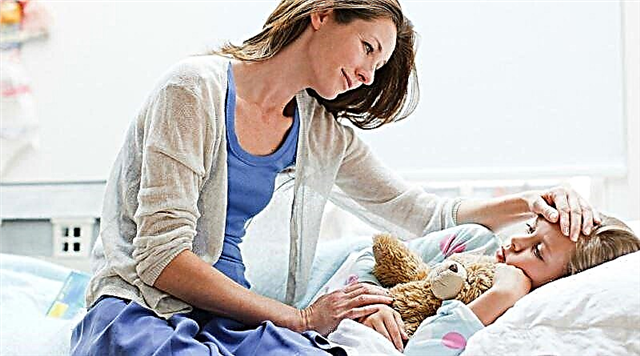
A lot depends on the health of the kidneys, because they function as a natural filter for our body. At the same time, renal pathologies can cause very negative consequences. And one of the most common kidney problems in children is hydronephrosis.

What it is?
Hydronephrosis of the kidneys in children is quite common, while in most cases boys are susceptible to the disease. Pathology consists in a violation of the outflow of urine, which causes changes in the structure of the kidney, and in a severe case can lead to its atrophy. Urine presses on the structure of the kidney from the inside, and if the pressure is prolonged, then this leads to a change in the structure of the organ, the pelvis and calyx suffer. They stretch, expand, their sizes differ from normal in a larger direction.
Changes in the structure, in turn, aggravate the violation of the outflow of fluid and its hydrostatic pressure becomes stronger. therefore the longer the pathological process lasts, the more extensive violations of the kidney structure develop, as a result of which it works worse and worse.
It is believed that hydronephrosis is almost always associated with congenital causes - anomalies in the development of the organs of the urinary system. Only the right kidney or only the left kidney can be affected - in this case, they speak of unilateral hydronephrosis. A more serious disease is considered a bilateral form, in which the functions of both kidneys are impaired at once.
If the disease is bilateral, then compensation does not occur, which causes a severe course. In case of a unilateral disease, the inadequate functions of one organ are taken over by the second, healthy one, therefore the child's condition as a whole is compensated.

If nothing is done, then hydronephrosis in children gradually turns into an atrophic form - the parenchyma begins to die off.
Different types of the disease can be found in children and newborns:
- aseptic - if the violation of the collecting function of the kidney proceeds without the addition of infection;
- infectious - if the functional and structural disorder is associated with the addition of an infection.
Considering the danger that hydronephrosis carries, the main task of doctors is to establish the disease as early as possible in order to provide the necessary treatment and reduce the likelihood of complications.

Causes
Since in most cases hydronephrosis in children is congenital, it is believed that the true reasons are quite difficult to find, since anomalies of the organs of the urinary system were formed during the intrauterine life of the baby.
The kidneys in the fetus are formed during embryogenesis - after the 6th week of pregnancy. And a wide variety of factors can affect this process - smoking and alcohol, medications taken by a pregnant woman, genetic disorders of the fetus, exposure to adverse environmental factors, infection of the expectant mother with influenza, ARVI, and other infectious diseases. The reason may lie in the severe stress that the woman suffered from the 6th to the 10th week of pregnancy.
Whatever factor plays a role too narrow urinary canals are formed in the fetus, due to which an increased pressure of urine on the parenchyma occurs in utero. Children in the womb drink water and pee. An impaired position of the ureters may form, which leads to a backflow of urine. Sometimes the reason lies in the violation of the structure of the vessels that feed the kidneys, and then the extra vessels disrupt the patency of the ureter.
Congenital hydronephrosis is often visible already during pregnancy on ultrasound. After the birth of a baby in an infant, pathology is confirmed or detected for the first time. The latter happens less often, given that all women undergo ultrasound scans more than once during the entire period of pregnancy.
Acquired hydronephrosis is much less common. It can lead to kidney and lower back injuries, urolithiasis, metabolic disorders, due to which kidney stones are formed more actively. The cause of the disease can be a previous inflammation of the ureter, after which a scar forms, narrowing the lumen. Sometimes the reasons lie in an unsuccessful operation, in which the ureter was injured.

Classification
Since the changes that urine pressure causes in the structure of the kidneys are gradual, there are several stages and degrees of the disease.
- At 1 degree (initial) kidney functions are preserved almost in full, there is a slight expansion of the pelvis.
- At grade 2 functions of the kidney begin to be lost, the size of the pelvis exceeds the norm, its walls are thinner. The organ itself becomes enlarged.
- At grade 3 kidney functions are lost significantly or completely, the organ is greatly enlarged, there is focal or complete atrophy of the renal tissue.
Sometimes grade 4 hydronephrosis is also isolated, in which the kidney does not function at all, that is, it is completely atrophied. But often this form of the disease is included in the 3rd degree.
In 90% of cases, children's hydronephrosis is unilateral. In the vast majority of cases, the right kidney is affected. The defeat on the left is less common. Bilateral hydronephrosis in children occurs in 10% of cases.

Symptoms
Signs of the disease with unilateral hydronephrosis may not appear for a long time, because the second kidney fully compensates for the disturbances in the work of the first. And at the initial stage there may be no symptoms at all. But over time, when there are changes in the structure of the kidney, signs will begin to appear. Most often, the disease manifests itself as follows:
- dull, pulling pains appear in the lumbar region - they are not constant, they appear, then disappear, as the pathology progresses, they appear more often and last longer;
- hematuria - the appearance of blood impurities in the urine, the urine becomes pink, red, scarlet - it all depends on the specific number of erythrocytes in urine, the more there are, the more saturated red the color of urine will be;
- the amount of fluid secreted by the kidneys decreases;
- blood pressure rises, accompanying symptoms appear - headache, visual disturbances, anxiety increases, the child begins to get tired faster;
- there are signs of intoxication of the body.


When hydronephrosis reaches the third stage, the child's skin looks pale, the skin is dry, and the content of red blood cells in the urine increases. The baby begins to write so rarely that sometimes they talk about the complete cessation of urination. The body temperature rises, sleep and appetite suffer, the child is apathetic and weak, he is tormented by nausea.
Predictions and consequences
Of course, the disease in children does not go away, so there is no hope that the baby will "outgrow" the problem. In all cases, treatment is necessary. And if you do not rush with it, then the development of pyelonephritis, renal failure is possible. The younger the child, the more dangerous the kidney pathology is for him. In infants up to a year, complications of hydronephrosis can be fatal.
Diagnostics
In order to establish an appropriate diagnosis, the doctor prescribes, according to clinical guidelines, a large list of laboratory tests: blood tests, urine tests, Reberg functional tests. The child undergoes an ultrasound scan, an ultrasound scan with Lasix, if necessary, an MRI or CT scan is done.

This is usually enough to accurately establish the correct diagnosis.
Treatment
The initial forms of hydronephrosis usually do not require serious medical intervention. The child is assigned a diet, he is put on a dispensary record with a nephrologist, and the period of observation by a doctor will directly depend on how the diseased kidney behaves further. The problem is that the first degree is not found as often as we would like. Usually, a doctor is consulted already when symptoms appear, and the symptoms themselves indicate the presence of a second and higher stage.
In the second and third degree, conservative treatment is prescribed. Medicines are recommended for the child, but if their use according to the scheme prescribed by the doctor does not bring the desired result, they talk about the need for surgical intervention.
Among the medications for the treatment of children's hydronephrosis, anti-inflammatory drugs are usually used, drugs that reduce edema (diuretics), and sometimes antibiotics (with an infectious form). To alleviate the symptoms of intoxication, sorbents are recommended. If blood pressure rises, antihypertensive drugs are prescribed to lower blood pressure.
The diet for this ailment excludes low-calorie food. The baby's diet should be saturated with calories and vitamins, but salt is prohibited. The patient is assigned a special drinking regimen.

Surgery for hydronephrosis is a forced measure that is used if the outflow of urine is significantly impaired, and also when conservative treatment has not helped.
The operation is designed to restore the patency of the ducts and the normal position of the ureters. It can be carried out in an open way - the surgeon excises the affected parenchyma by stitching healthy areas of the kidney tissue (pyeloplasty).
If the child's cause of the disease lies in a narrow urinary canal, an endoscopic operation is performed, with a narrow ureter, stenting is performed.
In most cases modern medicine is trying to resort to laparoscopy - a more gentle method in which the traumatic effect is minimal, and the postoperative period is faster and easier.
If there is nothing to treat, nephrectomy is performed - removal of an atrophied organ. But this is possible only with a one-sided disease and complete death of the kidney.

The effectiveness of treatment and feedback
The lower the grade, the better the prognosis for treatment. In 90% of cases, at the initial stages of pathology, complete recovery is achieved. At 2 and 3 degrees, the prognosis is less positive - even with adequate treatment, it is possible that the child will receive a disability. But if no treatment is provided at all, then a fatal outcome is very likely.
Parents' comments on treatment are mixed. Even after a successful operation, which is often performed for very tiny children at the age of only a few months, children rehabilitate for a long time, they have weak immunity, and much is prohibited to them even several years after surgery. Often parents deliberately refuse to receive a disability for a child, but this is their full right.




